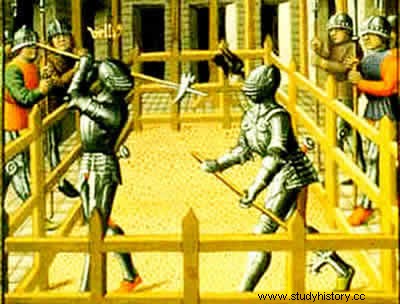
By Rainer Sousa
Responsible for the formation of the military forces of their time, the medieval knights appeared among the members of the medieval nobility. In principle, in addition to the noble origin, a knight should have training and weapons to ascend to such a condition. In many cases, they received land and collection rights to defend the property of a feudal lord. Over time, the scope of this prestigious condition has been surrounded by greater demands.
At around the age of seven, the young nobleman began his knightly training performing the duties of a page. Already in this first phase, he learned about riding and the handling of weapons used by a knight. At the age of twelve the apprentice was made a squire. At that time, he accompanied his lord on the battlefields and deepened his knowledge of swordplay. In addition, he improved his physical condition in fights, races and fencing challenges.
Between the ages of 18 and 20, the squire made his transition from youth to adulthood by becoming a knight. The knight's consecration ritual was a solemnity of great importance, since on some occasions it even had the illustrious presence of the king. The night before the event, the aspirant would fast and perform the weapons vigil. When the big day arrived, the future fighter was challenged in combat simulations that proved his efficiency.
In the oath, the knight's lord reinforced the knight's condition of submission and loyalty by slapping him in the face, shoulder or back of the head. After that, an utterance was made in which the lord reinforced courage and loyalty by divine invocation. Soon after, the young man got on his horse and rode off. This was how a member of the noble class became one more member of the forces that protected the lands of their time against invasion.
In war situations, knights were organized in different battle stations. As important as his position and abilities, a knight could not survive long in war without his horse. If his mount was lost, death was almost certain. At the end of the medieval period, the formation of national armies and the introduction of firearms weakened the image of the knight, who became part of the legends of an era.
